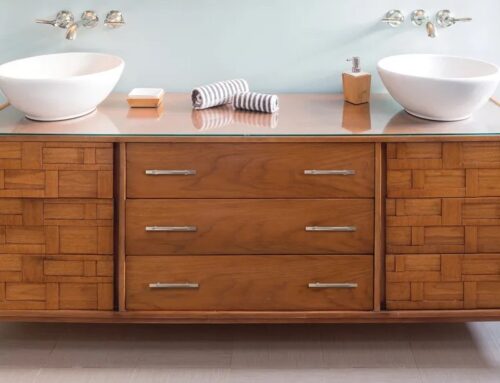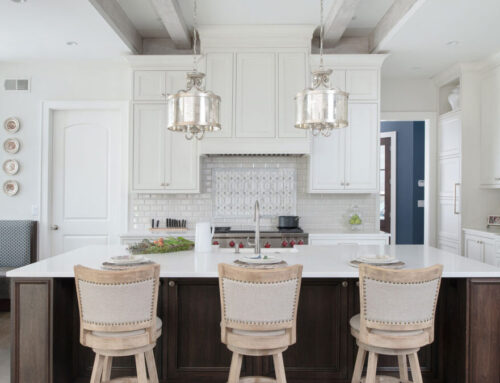If you’re planning to replace your cabinets or install new ones in your newly built home, timing is crucial. Proper planning and scheduling will ensure a smooth and efficient process, minimizing any disruptions to your daily life. To help you prepare for your cabinet project, we have outlined the key steps involved, which include the design process, ordering cabinets, and creating an installation schedule.
Design Process
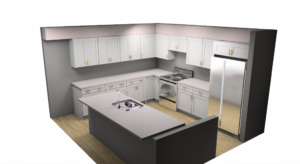
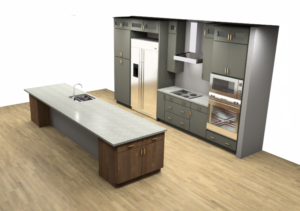
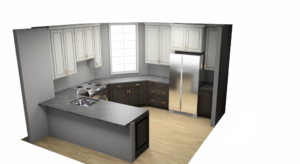
Before you can start ordering cabinets, you must have a clear design plan in place. The design process involves envisioning your ideal cabinet layout, taking measurements, and considering your storage needs. Here are some helpful tips to streamline the design phase:
- Research: Explore different cabinet styles, finishes, and hardware options to determine your preferences. Look for inspiration in magazines, online galleries, and local cabinet experts.
- Take Measurements: Measure the dimensions of your kitchen or bathroom space accurately. Schedule a professional measurement to ensure precision.
- Consult with Experts: It’s advisable to consult with cabinet designers or professionals who can guide you through the design process. They can help you choose the right cabinet configuration, layout, and materials based on your budget and preferences.
Contact our design consultants and they can help you configure the best layout for your kitchen or bathroom cabinets. You want to make sure you can feel confident and comfortable with the cabinet expert you are working with. Ask lots of questions and share your expectations about the project. It might take 1-3 appointments to get the design right before the ordering the cabinetry.
Ordering Cabinets
Once you have finalized your cabinet design, it’s time to place your order. Ordering cabinets can take some time, so it’s important to plan in advance to avoid delays. Follow these steps to ensure a seamless ordering process:
- Research Suppliers: Look for reputable cabinet manufacturers or suppliers. Read the reviews from previous customers to ensure you’re selecting a reliable company known for their quality products.
- Request Quotes: Contact local suppliers and request quotes based on your design specifications. Consider factors such as lead time, delivery options, and warranty when reviewing the quotes.
- Place Order Early: To avoid potential delays, place your order early. Take into account the lead time provided by the supplier, as it may vary depending on the complexity of your cabinet design and the availability of materials. Normally, for a “quick ship” option it takes 2-3 weeks from the order submission to actual shipping. However, standard time is 7-9 weeks. If your cabinets are more custom it can take anywhere from 16 to 18 weeks. Please check with your cabinet expert at time of purchase as processing times can vary depending on the project and inventory availability.

Installation Schedule
Once your cabinets have been ordered, it’s important to create an installation schedule. This schedule will help you coordinate with contractors, tradespeople, and other stakeholders involved in the project. Consider the following steps to create an efficient installation schedule:
- Identify Installers: Determine whether you will hire professional cabinet installers or do the installation yourself. If opting for professionals, research and seek recommendations to find reliable and experienced installers. It’s important to find out if the installers are familiar with the product and designer expectations. Recruit the installation crew recommended by your cabinet supplier.
- Coordinate with Contractors: If you’re renovating a kitchen or bathroom in addition to installing the cabinets, account for the timeline of other construction tasks. Coordinate with contractors to ensure the cabinets are installed in the appropriate phase of the project.
- Allow Buffer Time: While creating the schedule, account for unexpected delays or contingencies that may arise during the installation process. Building in some buffer time will prevent unnecessary stress if any unexpected issues occur.
Generally, installation schedule should be confirmed depending on the complexity of your kitchen design and the size of the project and product availability.
Timing your cabinet project is crucial for a successful and efficient installation. By following these steps, including the design process, ordering cabinets, and creating an installation schedule, you can ensure a smooth journey from start to finish. Remember to plan in advance, involve professionals when needed, and allow flexibility in your timeline to account for any unforeseen circumstances. Stop by Elite Cabinet Designs showroom and speak to one of our knowledgeable cabinet specialists today!



